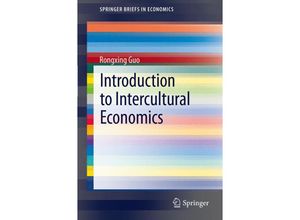This book presents a methodological framework for the analysis of intercultural issues
frequently misinterpreted by existing theories. It uses a challenge-and-response theory of
cultural development to examine the relationship between different natural disasters and
threats and the developments of ancient civilizations. The spatial interaction of ancient
civilizations is assessed and four non-linear patterns of intercultural dynamics are
presented. Our empirical analyses of the four major ancient civilizations (the Mesopotamian
the Egyptian the Indus and the Chinese) focus on intercultural influences as well as how they
have shaped the spatial dynamics of the world as a whole. This book also examines various
aspects of intercultural economic influences such as those of culture on international trade.
Evidence from a broad panel of nations supports the presumption that high-income trade partners
will be less sensitive to the measures of cultural dissimilarity than low-income trade partners
between which cultural dissimilarity leads to barriers to international trade. The treatment of
linguistic and religious factors as continuous variables in this book has improved past studies
in which 'language' was treated as one or more dummy variables and 'religion' was ignored.

